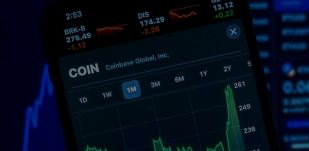What is the difference between Fixed and Floating Exchange Rates?
The exchange rate is the value of one currency compared to another, or the price you pay in your local currency to buy a fixed amount in another. But to make things a bit more complicated, there are two types of exchange rate – fixed and floating – and it’s important to know the difference between them so you can use the information wisely.
What is a fixed exchange rate?
A fixed exchange rate is also known as a pegged exchange rate, and describes when a currency’s value is fixed against the value of one or more other currencies. This means if you make multiple exchanges between these currencies you’ll always get the same exchange rate and so the same value for your money.
Governments usually fix an exchange rate to give their own currency stability and make financial and trade transactions consistent and predictable. But it also means the value of their currency will rise and fall as the value of the currency it’s fixed to rises and falls.
Some governments like to spread the risk of changes in the value of just one currency by fixing theirs to a basket of several currencies at different percentages. So for example, a currency may be fixed 50% to the British pound, 30% to the euro and 20% to the dollar. This means their currency is less exposed to the risk of changes to any one other currency they’re fixed to.
Need bank beating exchange rates
What is a floating exchange rate?
A floating exchange rate is also known as a flexible exchange rate, and changes according to supply and demand. This means if the demand for a currency is low or it’s widely available it’s value goes down, and conversely if it’s in demand or short supply, it’s value goes up – and with it the exchange rate.
The supply and demand for currency is influenced by a variety of things like international trade, interest rates and foreign investment. Each of these can significantly affect the value of a currency in international markets – for example, if a country is seeing a lot of investment from overseas businesses, the demand for its currency will go up which will, in turn, drive up value and the exchange rate.
The International Monetary Fund states that being driven by a floating exchange rate is a sign of a country’s financial maturity, but some countries prefer to straddle a line between fixed and floating with a managed floating approach. This means they use a floating exchange rate but only within a limited range where if the exchange rate gets too low or too high, the government can step in and take action.
Is a fixed or floating exchange rate better?
Perhaps unsurprisingly, both come with advantages and disadvantages and so choosing which is best is very dependent on any one country’s particular financial situation.
Fixed rate advantages and disadvantages
The big advantage of a fixed rate is stability, plain and simple. Fixing your currency to a powerful, stable one like the dollar or euro helps reduce the risk of sudden changes to a country’s foreign income and value of overseas investments, and help lower inflation. This can encourage international trade and help grow economies, which is why many developing African nations go down the fixed route.
The downside of a fixed rate is the sheer effort needed to keep it in check. The central bank will need to keep a constant eye on the market and intervene to stop economic changes affecting it too badly – usually by buying and selling currency. This can be hugely expensive however, and leave a country open to economic crisis if not managed properly.
Floating rate advantages and disadvantages
Contrary to the fixed rate route, the floating rate moves independently up and down based on changing market rates and supply and demand. This means it doesn’t have to be monitored and managed, which helps free up valuable resources, brings more flexibility to internal policies and crucially frees cash flow and reserves from complicated laws designed to regulate it.
At the same time though, a floating rate brings with it far more uncertainty. It exposes the country to bigger (sometimes dangerous) fluctuations in the exchange rate, which could deter foreign investors and traders and leave already weakened economies more susceptible to rising international costs and volatile markets.
The Clear Currency effect:
Keep it simple
Stability
A fixed rate pegs a currency’s value to another for a fixed period of time to create stability.
Supply and demand
A floating rate moves independently and is affected by hard-to-control or predict market conditions like supply and demand.
Which is best?
Neither is better than the other – countries will always choose the exchange method that works best for them, or even more popular nowadays they’ll opt for a range of the two.
Join the currency specialists
Related Articles
How to Mitigate Foreign Exchange Risk
Currency risk can have a significant effect on the efficiency and profitability of any international business. Each exchange rate movement affects how much you receive from sales and what you pay to suppliers.
Read more
Moving to Dubai from the UK: Checklist
You’re ready for a new life overseas and have decided you’re moving to Dubai. Now it’s time to consider the various costs involved, from your visa and accommodation, to health insurance, shipping your belongings and bringing your beloved pets along too.
Read more
Currency Outlook Quarter 1 2023
Clear Currency looks back at the performance of the US dollar, euro and sterling in Q4 2022, and assesses what might be in store for Q1 2023.
Read more


